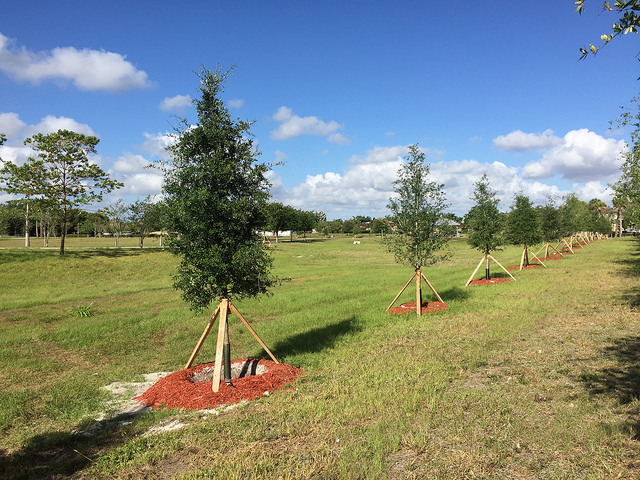Trees planted in urban landscapes often
require irrigation during all stages of life. Landscape tree water management
requires reasonable estimates of water demand in order to schedule irrigation
amounts and timing to conserve water while maintaining tree health. Estimating
tree water demand is not straightforward for water demand of isolated trees as
typically found in urban landscapes is affected by numerous factors.
To meet minimum
spring flows, water management districts in Florida sought to make both
agriculture and urban landscapes water efficient, which includes tree farms. Quercus
virginiana, commonly known as live oak trees, is endemic to Central Florida
and among the most popular landscape trees for their gracefulness and spreading
shade.
In this study, to
provide a basis for irrigation allocations both during production and in
landscapes, daily actual evapotranspiration (ETA) in liters for
three live oak trees was measured with weighing lysimeters over five years,
beginning with seedlings and continuing until trees averaged 7.2 meters in
height. Empirical models were derived to calculate ETA based on crown
horizontal projected area (PCA) or trunk caliper (TCSA), adjusted daily by
changes in evapotranspiration (ETO). Average ETA to
produce these live oaks was 62,218 L cumulative over 5.5 years. Effectively
transpiring leaf, tree water use volume divided by ETO, was closely
related to PCA over five years with the slope of this relationship being
equivalent to a Plant Factor of 0.93. The product of ETO and
this Plant Factor can be used to estimate depth of live oak water demand in
urban landscapes. Also, this Plant Factor can estimate water demand volume in
nurseries and landscapes when combined with PCA, and similarly the slopes for
TCSA can be used to estimate ETA water volume from measured
trunk diameter.
In conclusion, daily
ETA of Quercus virginiana
can be estimated with high precision based on the methods of calculating ETO
and using the appropriate coefficients (for PCA or TCSA) for a given measure of
tree capacity to move and transpire water.
Article by Richard
C. Beeson, et al, from University of Florida, Apopka, FL, USA.
Full access: http://mrw.so/3qjsKJ
Image by Ruy Urraca, from Flickr-cc.

评论
发表评论